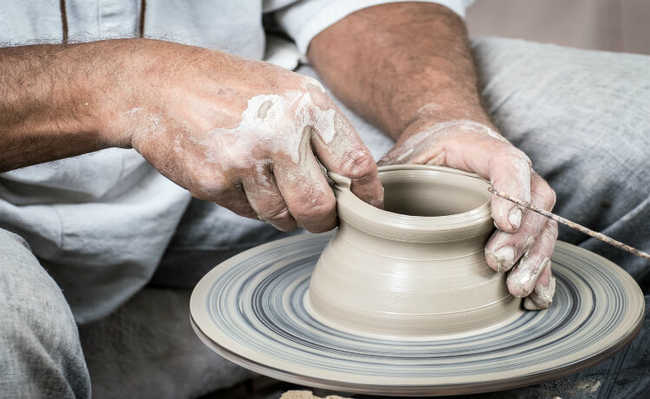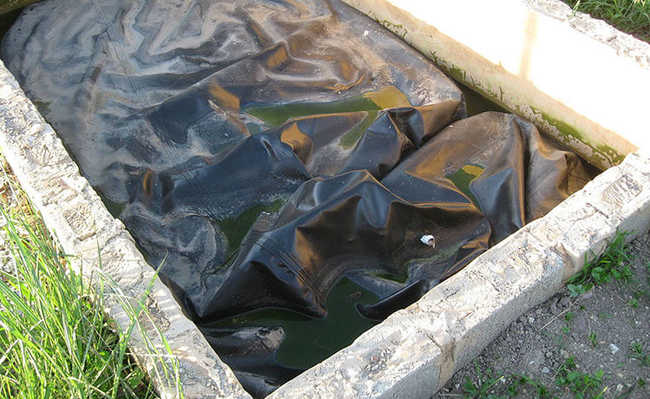How to get water from the ear
Discover How To Safely Get Water From Your Ear And Avoid Infections

Edited and resized image of Hayes Potter is available on Unsplash
Knowing how to get water out of the ear correctly can be a way to prevent the discomfort from spreading to the throat. This condition creates an itchy feeling in the ear or throat and can stifle hearing.
Normally, water drains on its own. Otherwise, it can lead to an ear infection. This type of infection in the external ear canal is called swimmer's ear, or otitis externa.
It's not difficult on its own. But some tips can help:
How to get water from the ear safely
If water gets stuck in your ear, you can try several home remedies to get relief:
1. Shake the earlobe
This first method can shake water from the ear immediately.
Gently and gently pull or shake your earlobe while tilting your head in a downward motion toward your shoulder.
You can also try shaking your head from side to side while in this position.
2. Use gravity
With this technique, gravity should help to drain water from the ear.
Lie on your side for a few minutes, with your head in a towel to soak up the water. Water may slowly drain from the ear.
3. Create vacuum
This method will create a vacuum that can draw out the water.
- Tilt your head to the side and rest your ear in the palm of your hand, creating a firm seal;
- Gently push your hand back and forth towards your ear in one quick motion, flattening it as you push and cupping it as you pull away;
- Tilt your head down to allow the water to drain.
4. Use a hair dryer
Heat from the dryer can evaporate the water inside the ear canal.
- Turn the dryer on to the lowest setting;
- Hold the hair dryer about 12 inches from your ear and move it back and forth;
- While pulling on the earlobe, let the warm air blow into the ear.
7. Use olive oil
Olive oil can also help prevent ear infections and repel water.
- Heat a little oil in a small bowl and test the temperature with your little finger so you don't burn your ear;
- Using a clean eyedropper, put a few drops of oil into the affected ear.
- Lie on the other side for about 10 minutes, sit up and tilt your ear down. The water and oil must drain.
8. Try more water
This technique may seem illogical, but it can really help get water out of the ear.
- Lying on your side, fill the affected ear with water using a clean eyedropper.
- Wait 5 seconds and then turn, with affected ear facing down. All water must drain.
How to remove water from the middle ear
If you have middle ear congestion, depending on the cause, OTC decongestant or antihistamine therapy may help. Follow the instructions on the package. Here are some other remedies to try.
10. Yawning or chewing
When water gets trapped in the Eustachian tubes, moving your mouth can sometimes help to open the tubes.
Yawn or chew gum to relieve tension in the Eustachian tubes.
11. Perform the Valsalva maneuver
This method can also help to open closed Eustachian tubes. Be careful not to blow too much. This can damage your eardrum.
- Breathe deeply. Then close your mouth and gently pinch your nostrils with your fingers.
- Slowly blow air out of your nose. If you hear a popping sound, it means the Eustachian tubes have opened.
12. Use steam
Hot steam can help release water from the middle ear through the Eustachian tubes. Try taking a hot bath or doing a mini sauna with a bowl of hot water.
- Fill a large bowl with hot water;
- Cover your head with a towel to keep steam out and keep your face over the bowl;
- Breathe in the steam for five or ten minutes and then tilt your head to the side to drain the ear.
what not to do
If home remedies aren't working, don't use cotton swabs, fingers, or any other object to dig into the ear. This can generate:
- Infection by bacteria to the area
- Push the water deeper into the ear
- hurt the ear canal
- perforate the eardrum
How to avoid the problem
These simple tips can help prevent water from getting stuck in your ear.
- Wear ear plugs or a swimming cap when swimming;
- After spending time immersed in water, dry the outside of your ear thoroughly with a towel.
When to seek medical advice
Trapped water usually disappears without treatment. You can try one of the home treatments mentioned above to help ease your discomfort. But if the water remains after two to three days or if you notice signs of infection, seek medical advice.
If your ear becomes inflamed or swollen, you may have developed an infection. An ear infection can become serious if you are not treated. It can lead to hearing loss or other complications such as bone damage.
A chronic infection that results in a hole or rupture in the eardrum - called chronic suppurative otitis media - is difficult to treat. It is often treated with antibiotics given as drops. A doctor can give instructions on how to aspirate fluids through the ear canal before administering drops.










